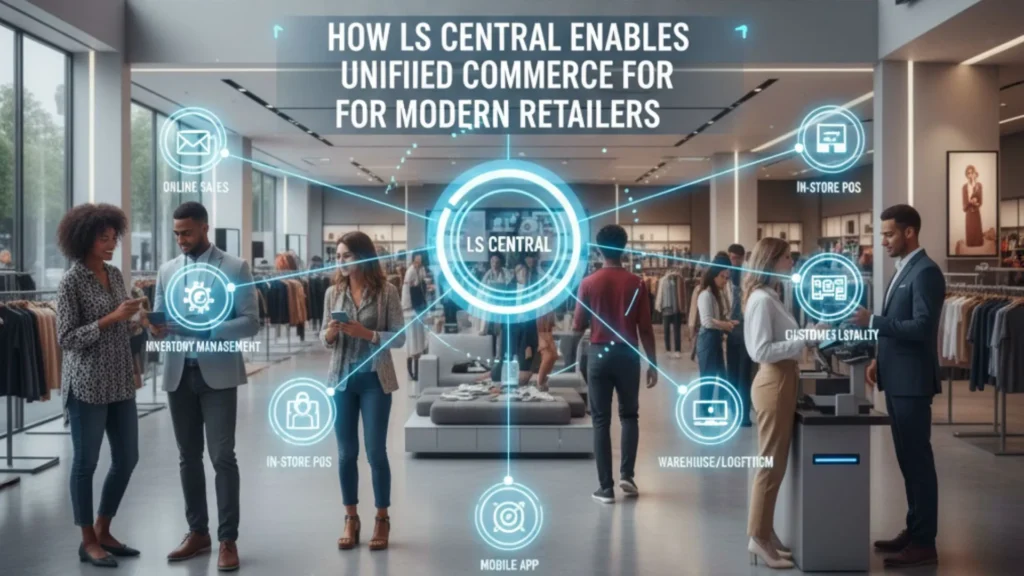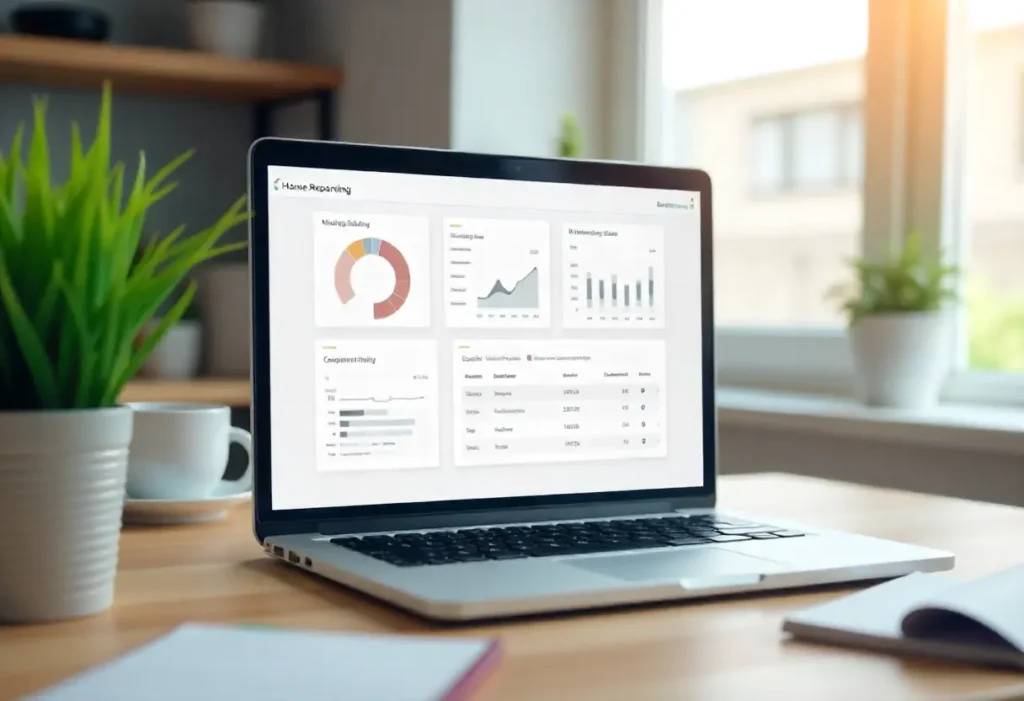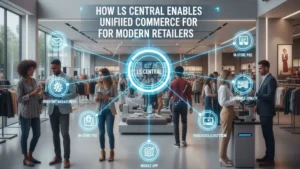How LS Central Enables Unified Commerce for Modern Retailers
Retail is undergoing a massive transformation. The days when customers relied only on physical stores are long gone. Today’s shoppers browse online, compare prices on mobile, check stock availability on websites, visit stores to try products, and expect fast, flexible fulfillment options. They want a unified, seamless experience across every touchpoint. To meet these elevated expectations, retailers need unified commerce—a modern approach that connects all channels, systems, and data into one centralized platform. LS Central, built on Microsoft Dynamics 365 Business Central, has emerged as one of the most powerful unified commerce solutions for retailers of all sizes. For businesses working with a Microsoft Dynamics 365 Partner in Texas, USA, LS Central provides end-to-end retail management, real-time inventory visibility, integrated POS, and complete operational control. Paired with Microsoft Dynamics 365 Business Central in Texas, USA, it offers financials, supply chain, sales, procurement, warehousing, and retail operations inside a single ecosystem. This comprehensive article explains how LS Central enables unified commerce, why it’s essential for modern retail, and how businesses can leverage D365 services such as Microsoft Dynamics 365 Support Services in Texas, USA, MS Dynamics 365 Implementation Services in Texas, USA, and D365 Migration Services in Texas, USA to deploy LS Central successfully 1. The Shift From Omnichannel to Unified Commerce Omnichannel retail was once the gold standard because it allowed customers to shop across multiple channels. But retailers soon realized that omnichannel still created fragmented systems and data silos. Unified commerce goes a step further by consolidating every piece of data — inventory, orders, payments, promotions, and customer profiles — into one platform. This shift is driven by growing customer demands such as: Unified commerce eliminates channel-based barriers so customers enjoy a fluid, uninterrupted shopping journey. 2. What Is LS Central? LS Central is an all-in-one retail ERP solution built on Microsoft Dynamics 365 Business Central. It connects every part of a retail business, including: Instead of juggling multiple systems, retailers manage their entire operation from one unified platform. This results in improved accuracy, faster decision-making, lower costs, and a superior customer experience. 3. Why LS Central Is Critical for Modern Retailers Today’s retail operations face multiple challenges: LS Central solves all these issues by giving retailers a single version of the truth. Whether a shopper is browsing online or scanning a product in-store, they receive consistent and accurate information. Retailers working with a Microsoft Dynamics 365 Partner in Texas, USA gain access to tailored LS Central implementations that meet their business processes, workflows, and industry requirements. 4. How LS Central Enables Unified Commerce Below are the core capabilities that empower LS Central to unify retail operations end-to-end. 1. Unified POS That Works Everywhere LS Central offers a powerful POS system that supports: Every POS terminal is connected to the central database. This ensures: Retailers especially benefit from cloud-enabled POS systems that continue running even when offline. 2. Complete Inventory Visibility Across All Channels Inventory mistakes are costly. Customers expect accurate availability before they drive to a store or make an online purchase. LS Central provides: With Microsoft Dynamics 365 Business Central in Texas, USA, retailers also gain access to powerful warehouse and supply chain capabilities. Together, this ensures: 3. Seamless Omnichannel Order Fulfillment Retailers can offer modern fulfillment experiences such as: Order routing is automated based on: This leads to faster delivery, higher customer satisfaction, and optimized inventory usage. 4. Intelligent Customer Insights & Personalization LS Central includes built-in CRM features that store rich customer profiles, including: This unified profile enables: Whether a customer buys online or in-store, their benefits and history travel with them. 5. Powerful E-Commerce Integration Modern retailers operate across physical and digital channels, and LS Central seamlessly integrates with major e-commerce platforms like: Benefits include: As online sales continue to grow, this integration ensures flawless channel synchronization. 6. Centralized Financials and Reporting Because LS Central is built on Business Central, it provides: Retailers gain a complete understanding of performance across stores, channels, and product categories. 7. Scalable Architecture for Retail Growth Whether a retailer has 5 locations or 500, LS Central scales effortlessly. Cloud deployment ensures: With the support of Microsoft Dynamics 365 Support Services in Texas, USA, retailers ensure smooth daily operations and system optimization. 5. Benefits of LS Central for Retailers 1. True Unified Commerce A single platform for POS, ERP, inventory, CRM, e-commerce, supply chain, and financials. 2. Greater Customer Satisfaction Real-time information, personalized promotions, and flexible fulfillment. 3. Higher Sales & Conversions Better product availability + targeted offers = more purchases. 4. Lower Operational Costs No need for multiple systems or costly integrations. 5. Faster Decision-Making Access to real-time insights across the entire retail ecosystem. 6. Future-Ready Retail Cloud systems, AI insights, mobile POS, and smart forecasting ensure longevity. 6. LS Central Implementation Strategy Working with a qualified Microsoft Dynamics 365 Partner in Texas, USA ensures a structured and smooth deployment journey. Step 1: Discovery & Process Assessment Partners analyze: Step 2: Solution Blueprint LS Central is mapped to business needs, including store setup, pricing, promotions, fulfillment rules, and merchandising. Step 3: Customization Custom modules, dashboards, or POS workflows are developed if required. Step 4: Data Migration Handled via D365 Migration Services in Texas, USA, ensuring accurate transfer of: Step 5: User Training Staff receive hands-on training for: Step 6: Go-Live Stores begin operations on LS Central with support from MS Dynamics 365 Implementation Services in Texas, USA. Step 7: Post-Go-Live Support Ongoing assistance is provided through Microsoft Dynamics 365 Support Services in Texas, USA. 7. Why Retailers in Texas Prefer LS Central + Dynamics 365 Retail in Texas is growing rapidly, and businesses require scalable, modern systems. LS Central is preferred because it provides: With the help of a trusted Microsoft partner, Texas retailers build strong, future-ready operations that support growth. FAQs Q 1. What is LS Central used for in retail? Ans: LS Central is used to manage POS, inventory, merchandising, loyalty, e-commerce, financials, and store operations on a single platform. Q 2. How does LS Central
How LS Central Enables Unified Commerce for Modern Retailers Read More »









